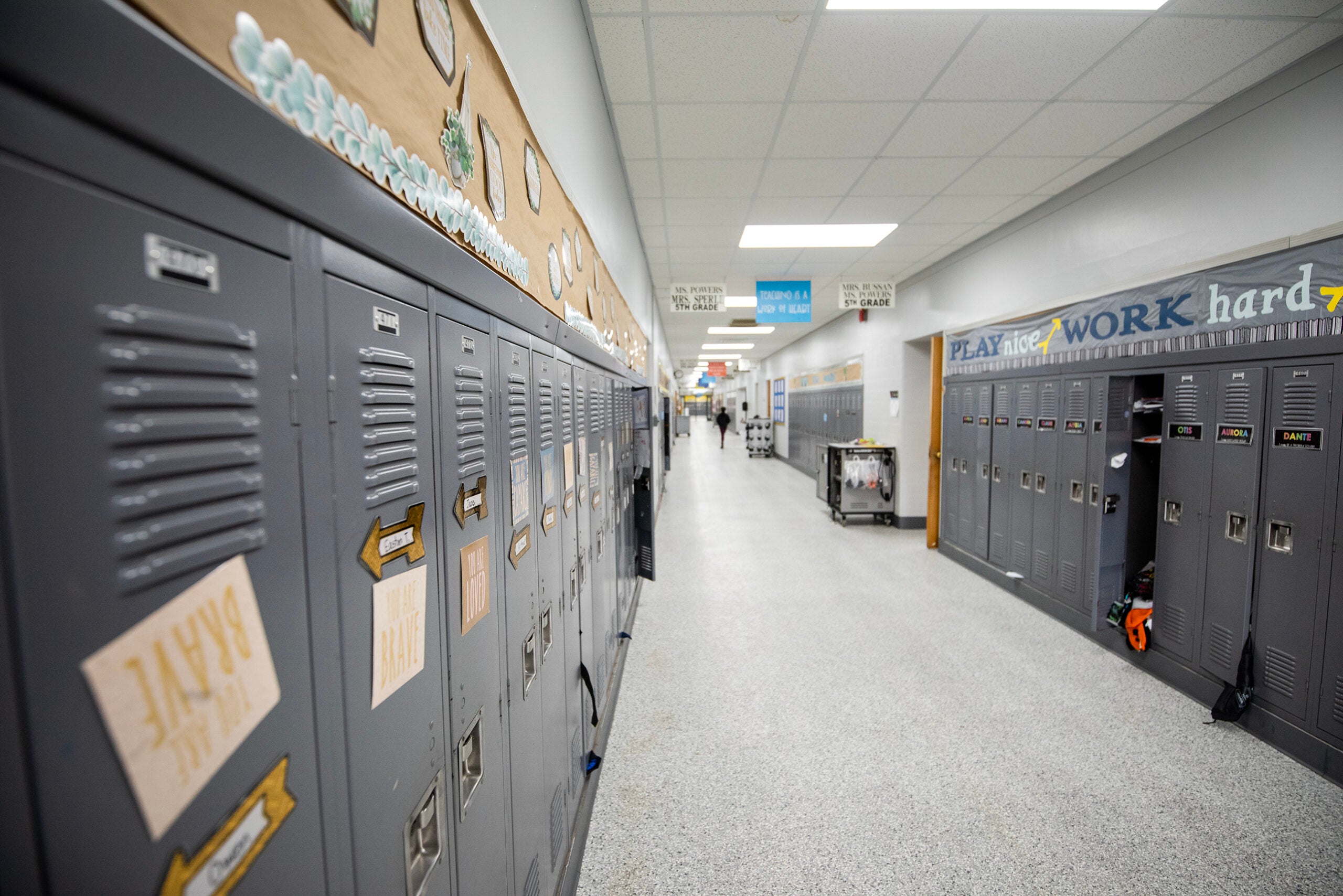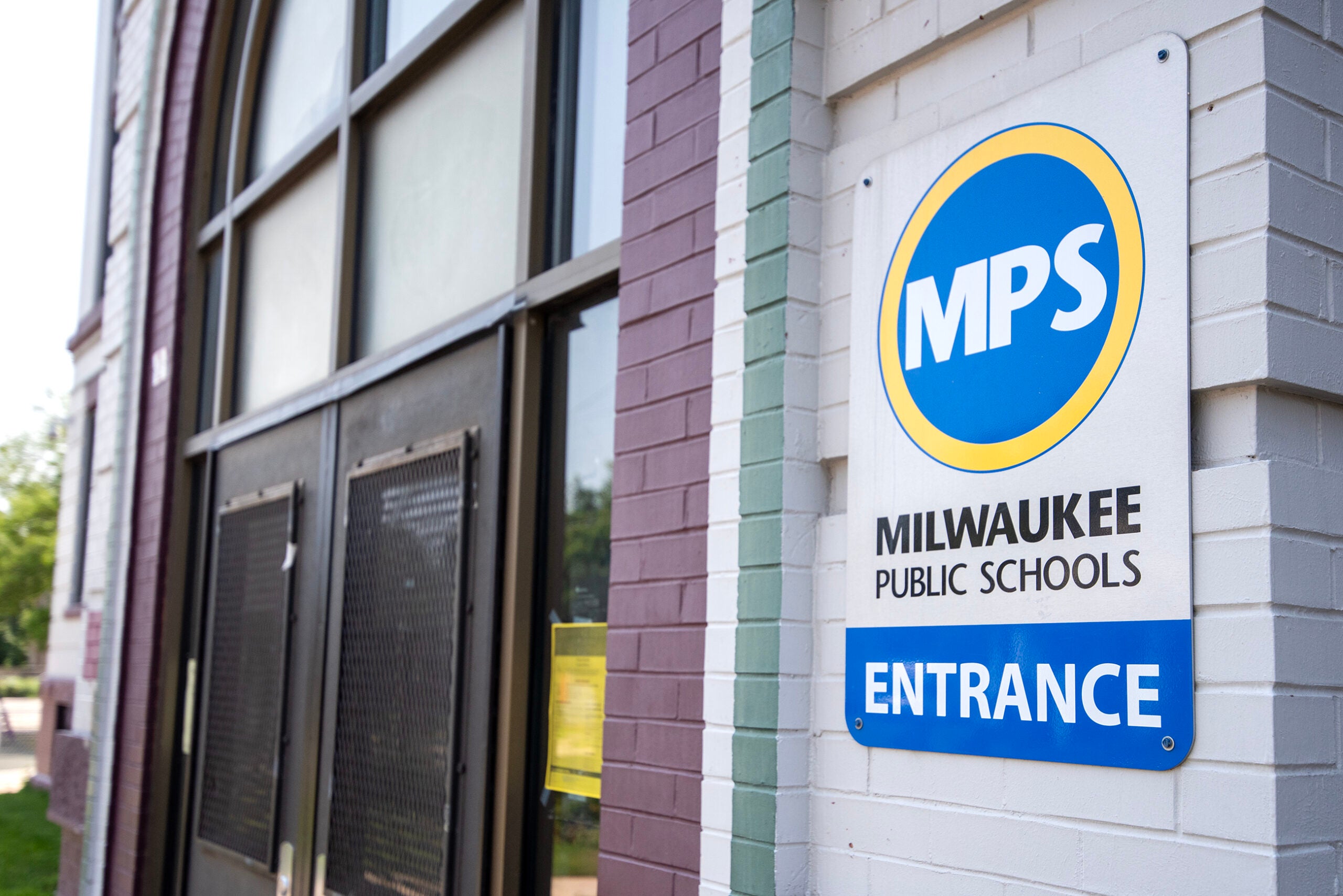Wisconsin school districts were initially slow to spend pandemic stimulus aid, but are now on track to exhaust the money by the September 2024 deadline, according to a new report.
Wisconsin’s public schools received nearly $2.4 billion in three rounds of Elementary and Secondary School Emergency Relief, or ESSER funds, meant to help students make up for learning loss during the pandemic.
But a new report shows the federal aid has done little to close the learning gap caused by the pandemic.
News with a little more humanity
WPR’s “Wisconsin Today” newsletter keeps you connected to the state you love without feeling overwhelmed. No paywall. No agenda. No corporate filter.
Quinton Klabon, senior research director for the conservative Institute for Reforming Government, or IRG, found Wisconsin school districts are on track to spend the third round of ESSER funds — about $1.5 billion — by the September 2024 deadline.
But Klabon found that $492 million remains unallocated, and 63 school districts have spent less than 33 percent of the funds they received including Green Bay, Beloit, Oshkosh, Manitowoc and Superior. Klabon said 13 districts have not spent any of the money.
IRG has also raised questions about how districts are spending the money. Construction projects make up the bulk of the spending — $270 million, or about 27 percent, according to IRG’s research.
“It is $50 million more than the next biggest category — teachers — at 22 percent of current allocations,” Klabon said, adding that mental health is not being prioritized. “Mental health allocations sit at 7 percent, which amounts to just one-fourth of the building renovation total.”
Department of Public Instruction spokesperson Abigail Swetz said implying that building structurally sound buildings and adequately sized classrooms would not have an impact on student learning is “disingenuous at best, and willfully misleading.”
She added that DPI data shows districts are prioritizing mental health services.
“It also bears reminding that (the Joint Finance Committee) did approve Wisconsin’s State Plan for ESSER III while providing very little administrative funding to the department, and that district ESSER III plans are publicly available,” Swetz said. “Considering IRG’s apparent interest in improving state government and the fact that the DPI is a part of that very state government, we look forward to the day IRG is interested in working together to better serve Wisconsin’s learners as opposed to the institute’s continued focus on scoring partisan, political points.”
Public documents show the state’s largest school district, Milwaukee Public Schools, received about $505.5 million in ESSER III funds. The district still has about $138 million to budget.
So far, MPS has spent about $168.4 million on construction projects. The district has also spent money on staffing, mental health and after school programs.
The Madison Metropolitan School District received about $42.5 million and has about $12.5 million left to spend. The district has spent the majority of its funds on staff and mental health services.
Districts that fail to spend the money by the September 2024 deadline could be required to return the funds, but would first have the opportunity to work with federal authorities on plans to use the remaining balance. The money can be spent on anything that could help students catch up on learning, but the definition on what meets that requirement is broad.
IRG CEO CJ Szafir said his organization is monitoring how DPI has spent federal funds because no one else is.
“Being pro-children means asking tough questions of adults,” Szafir said. “IRG has provided oversight of one-time funds because DPI habitually turns these educational questions into political ones. That doesn’t do a bit of good as school attendance drops, test scores decline and kids lose out on their futures.”
Despite billions of federal dollars being spent to help schools recover from the pandemic, progress in reading and math has stalled over the last year in elementary and middle schools, according to a study released Thursday by NWEA.
The organization examined MAP test scores from 6.7 million third to eighth grade students in approximately 20,000 public schools. About 25 percent of Wisconsin students take the MAP test, according to NWEA.
Overall, achievement gains in 2022-23 lagged pre-pandemic trends in all students except the youngest cohort, falling short by 1 to19 percent in reading and by 6 to 15 percent in math, according to the study.
“This trend is worse than what was observed in 2021–22 where, in general, achievement gains were consistent with or even surpassed pre-pandemic trends,” the study found. “The most notable departure from pre-pandemic trends is evident in the upper grades in reading. Reading gains for these grades were also the furthest below average in 2021–22.”
On average, students need the equivalent of an additional four and a half months of instruction in math, and an extra four months in reading to catch up to the typical pre-pandemic student. That’s on top of regular classroom time, the study found.
Wisconsin Public Radio, © Copyright 2026, Board of Regents of the University of Wisconsin System and Wisconsin Educational Communications Board.





